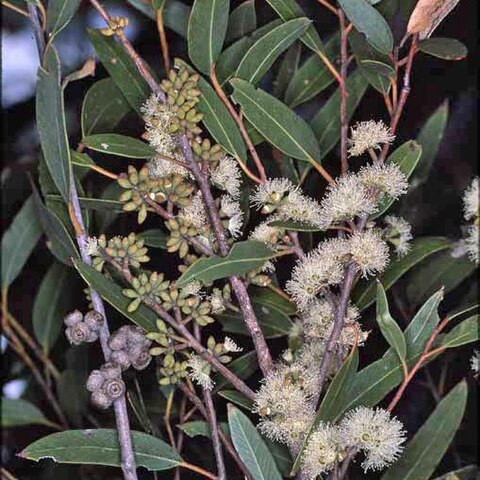Tree to 25 m. Bark grey. Juvenile leaves ovate, undulate, green, discolorous. Adult leaves narrowly lanceolate to lanceolate, acuminate; lamina 7–12 cm long, 1–2.5 cm wide, green, shining, concolorous; lateral veins faint, at 40°–45°; intramarginal vein up to 1 mm from margin; petiole channelled, 10–15 mm long. Umbels 7–15-flowered; peduncle angular or flattened, 10–15 mm long; pedicels absent or very short. Buds fusiform; operculum conical, 2–4 mm long, 2–3 mm wide; hypanthium obconical, 2–3 mm long and wide. Fruits globular, rarely hemispherical, 5–8 mm long, 5–7 mm wide; disc narrow, level or convex; valves 4, level.


